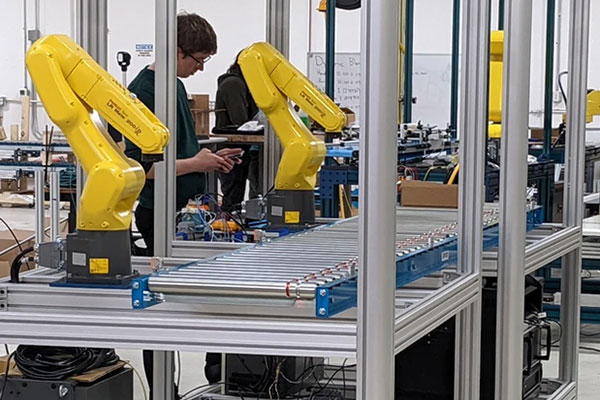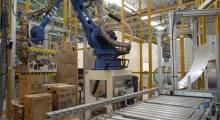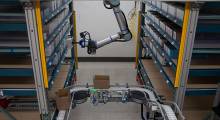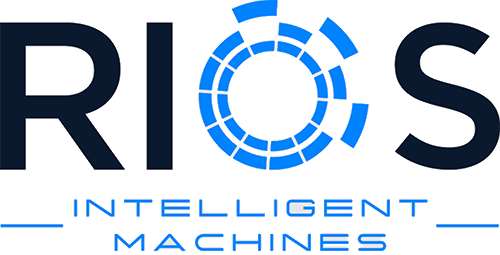Automated systems have become the difference between success and failure, which is why you see them used globally. There are many things to consider when and where this machinery should be applied. Things like labor conditions, expected output, assembly specifications, and much more.
Innovations with assembly lines over the decades have led to an over reliance on people. The realization came with the labor-crisis as more and more empty potions remained vacant. Manual processes such as palletizing, packaging, sorting, and more have become a cumbersome process with post-COVID demand.
But before you shop, it is vital to understand what you're buying, whether that be the pros or cons. This article will review different types of automation, as well as which robotic workcell is right for your business.
What is an Automation System?
A robotic automation system involves intelligent hardware and software that involve sensors, controls, and unsupervised actuators. Automation uses a number of technologies to minimize human intervention in the manufacturing processes. These systems are capable of predicting future trends and making decisions at a moment's notice.
This technology has been tested on assembly lines for years. The main purpose is to speed up the production process and save money. Automation systems are composed of various sensors, controls, and actuators which complete a function with minimal or no human intervention. Many businesses are looking to automation to maximize efficiency in overall operations.
Automation has even been introduced in the office. There are many dull tasks that waste the time of employees. These days, it is not uncommon for software to take the lead with accounting and HR – automating tasks like data crunching and social media interaction.
Basic Elements of an Automated System
There are a number of basic elements on how an automated system works. Understanding different components of these automated system examples will give you crucial knowledge to make a final decision.
Basic automation is a technology that takes over rudimentary tasks for workers. The basic model using digitalization to take manual jobs and automate them. These tools are designed to centralize routine tasks and free up human labor. This hardware can increase productivity while giving new insights into the efficiency of a factory.
Process automation is designed to create a uniform system and proper transparency. Users utilize dedicated intelligent software to maximize productivity and efficiency. It can also deliver new insights into business challenges and suggest solutions.
Automated systems are made up of a network of connections. There are three main components to this system: A receiving input (i.e. tactical sensors, human-machine interface), computer processing system, and the manipulators, or actuators, that complete the physical task.
The most important of these is the computing system. Examples of automated systems can be divided into two primary types: open-loop and closed-loop (feedback) control.
Open-loop begins the process by an operator sending task signals to the designated actuator. The software follows commands initially set by the human controller. Closed-loop systems are charged with tracking feedback. The signal generated by the sensors will measure responses, directly or indirectly, of the actuator and its efficiency. The data is processed by an operator who compares and contrasts desired vs actual output. The worker then must make necessary adjustments until the machine learning adapts and is functioning perfectly.
What Are the Three Major Systems Used in Industrial Automation
What is automation equipment and what kind fits you best? Below are the three main examples of automated systems:
Fixed Automation
Fixed or hard automation are machines that focus on one set of tasks with minimal flexibility. This type of automation is mainly used for mass production or lines with a continuous flow of goods. This equipment is applied to things such as conveyor belts where their fixed position can achieve higher production levels without downtime.
Programmable Automation
Programmable Automation delivers commands from other areas of a factory via computer programs. The resulting connections can vary widely based on changing assignments through a series of code. For the most part, the technology can be found in mass production, especially with materials from paper mills or steel rolling mills.
Flexible Automation
Often called soft automation, flexible automation is just that, flexible. These computer-controlled systems give manufacturers a more adaptable machine that adjusts flow and needs. The cobots are human-operated and take commands from users, which allows workcells to process adaptive codes that are delivered to a hard drive. It is common to apply this automation to batch processes and job shops with high product varieties. It is ideal for low-to-medium job volume, which includes sectors like textile manufacturing.
Benefits of Automation Systems
There are an incredible number of advantages to adopting automation equipment. Here we will review how these intelligent machines can improve your overall production.
Safer Workspace Environment
A factory floor can be a chaotic, unpredictable, and dangerous environment. By employing robots and cobots, it can be easier to maintain an organized and efficient floor, which leads to increases in overall happiness and productivity. Automation is one of the most effective ways to reduce health and safety risks, eliminate cumbersome manuals, and avoid repetitive strain causing injury.
Stay Competitive
Staying on top is the goal of nearly any manufacturer. Automation enables even small operations to experience sharp growth. By cutting back on scrap and human-error, you will see lower costs and higher-quality goods that are shipped at break-neck speeds.
Labor Crisis
The post-COVID world has highlighted how few people are interested in entering the manufacturing field. With its backbreaking reputation, it is becoming impossible to fill open positions. Automation allows you to fill these jobs while giving assistance to an overworked staff.
Enhance Production Capacity
Production Capacity will skyrocket with automation. These machines work 24/7 and require no downtime. Without breaks, sick leave or holidays, these robotic workcells are capable of taking over empty positions and keeping pace with the competition. Automated machinery can move faster than its human counterpart and creates consistent, accurate products with fewer defects.
Lower Operating Costs
Economic benefits can be derived from less wasted raw material and smaller manpower costs. By having an automatic feeding system, raw materials can be uniformly made. A line can easily be optimized by operators which allow robot automation systems to perform multiple jobs. Despite the high initial cost, this intelligent hardware can be more than worth the cost in the future.
Disadvantages of Automation Systems
While there are many advantages to automated systems being installed on a line, nothing is a cure-all. There are a number of disadvantages to automating factory systems. You must consider the following before committing to a robotic arm.
High Investment Cost
As stated earlier, these upgrades are not cheap. Full upfront cost could end up bankrupting the business as they attempt to expand. Automation systems are made up of various accessories including systems that run the power supply, compressed air system, hydraulic mechanisms, and lubrication levels. There are options for Robots-as-a-Service (RaaS) like with RIOS Intelligent Machines, that offer to rent robots on a usage basis.
Additional Maintenance Required
Running a machine 24/7 demands a lot, which leads to more complex and frequent upgrades. The continuous work will lead to inevitable wear and tear. To maintain your machines' lifespan, it is crucial to conduct regular maintenance checks to prevent future issues that can lead to full warehouse shutdown.
Less Versatility
Most automation systems are difficult to reconfigure for owners. In addition, modularity and programmability features increase equipment costs. Due to the fact that robots can only perform tasks based on specific instructions. Without the right programming, increased output or sudden system failure can be detrimental. In these cases, human operators can analyze conditions and act accordingly. When it comes to maintenance, RaaS provides options to have a company’s experts monitor your equipment.
There are many things to consider when shopping for an automated system, but with the tools provided here, you will understand what to look for and what to avoid.
Article topics
Email Sign Up



















